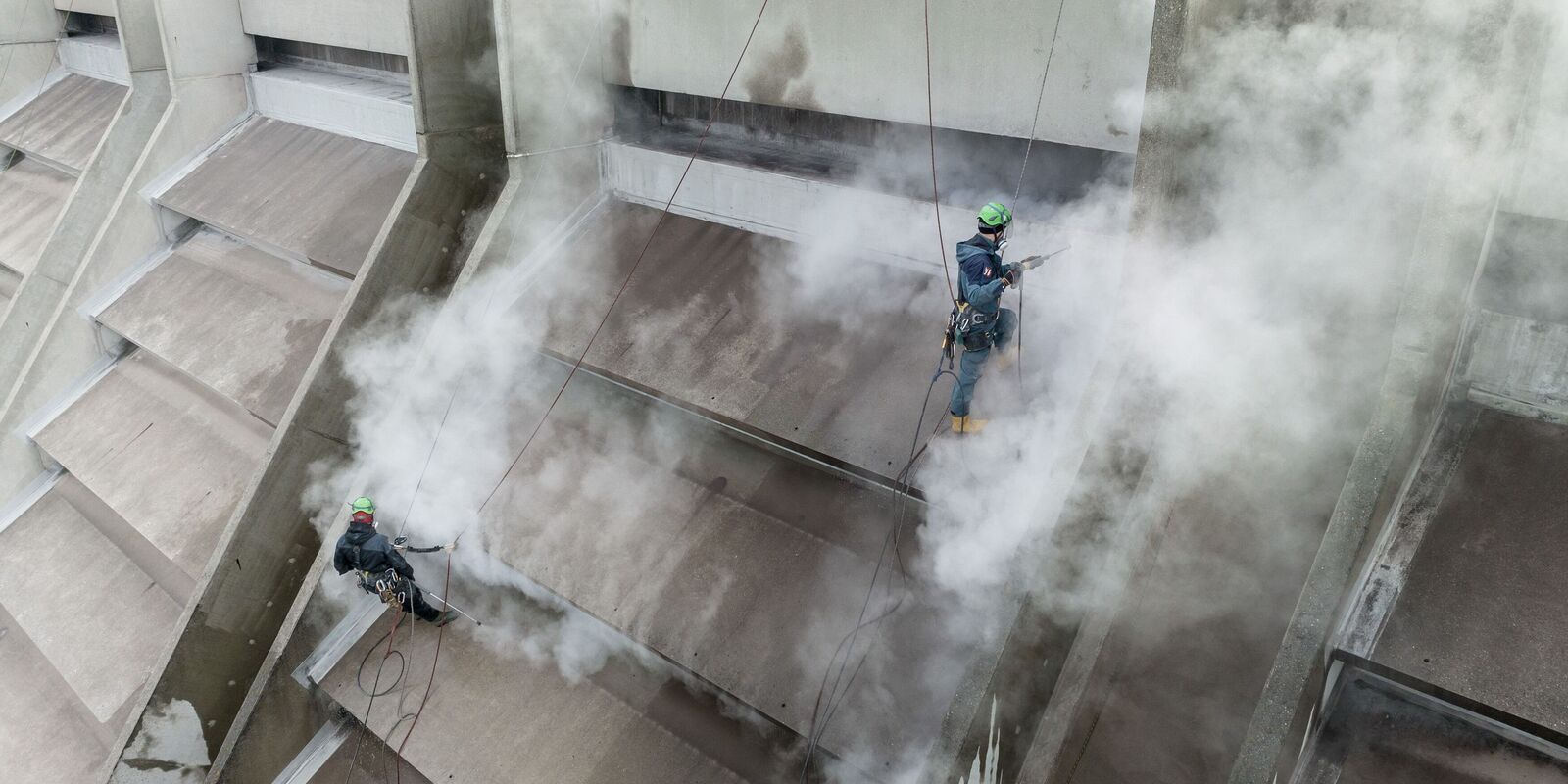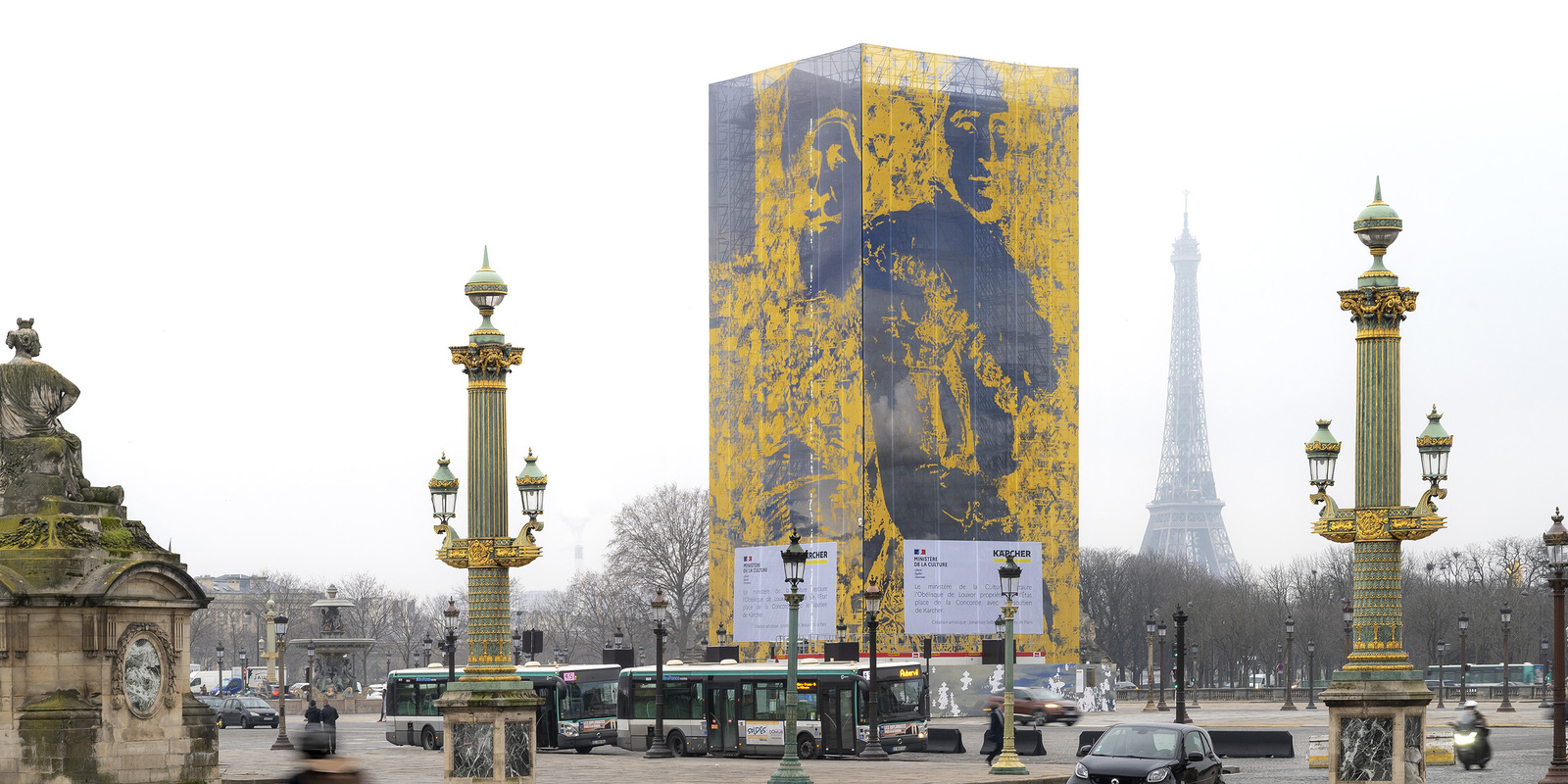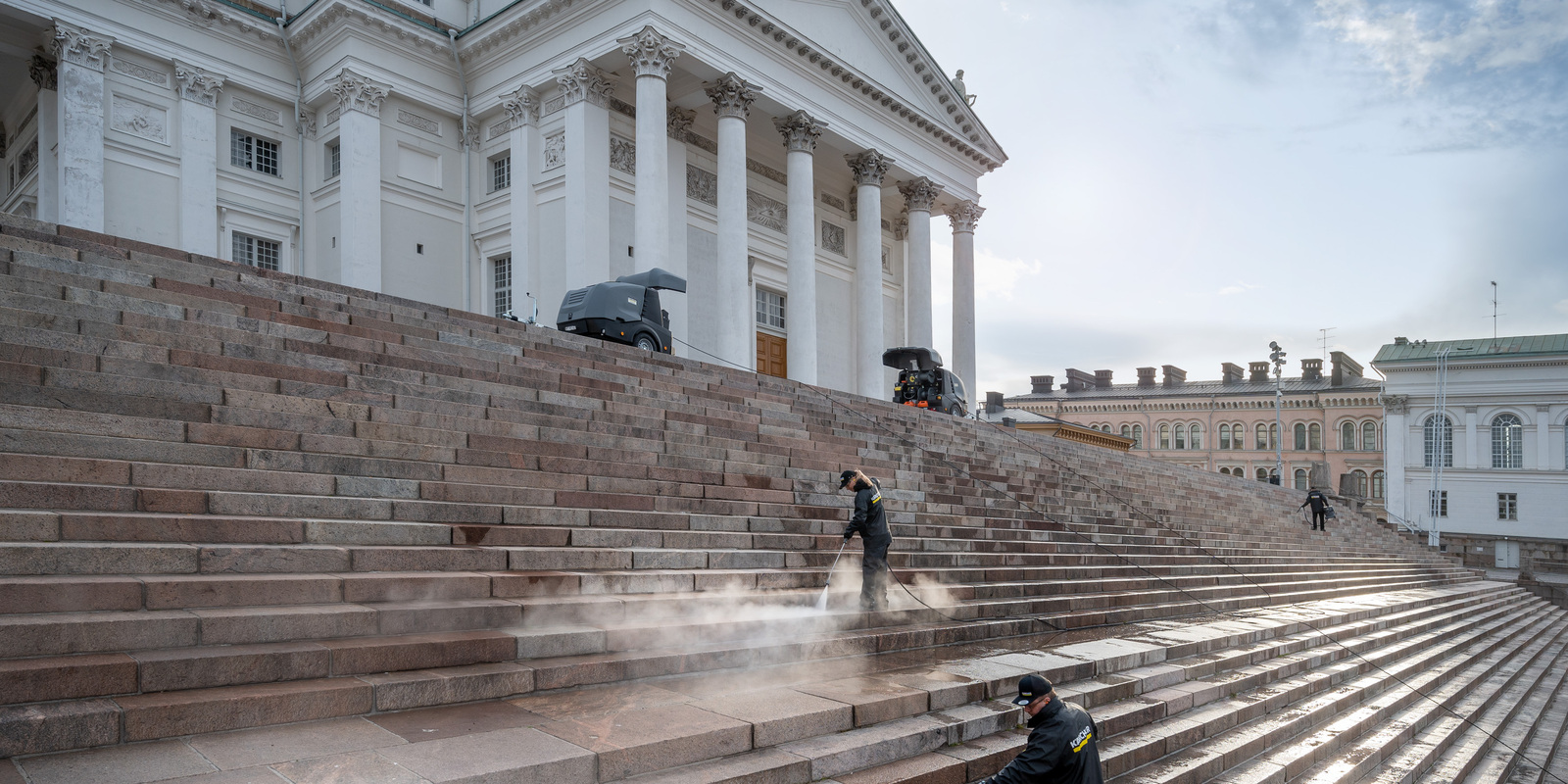CRYPT FLOOR IN SPEYER CATHEDRAL CLEANED
As part of its cultural sponsorship, Kärcher cleaned the floor of the crypt in Speyer Cathedral.
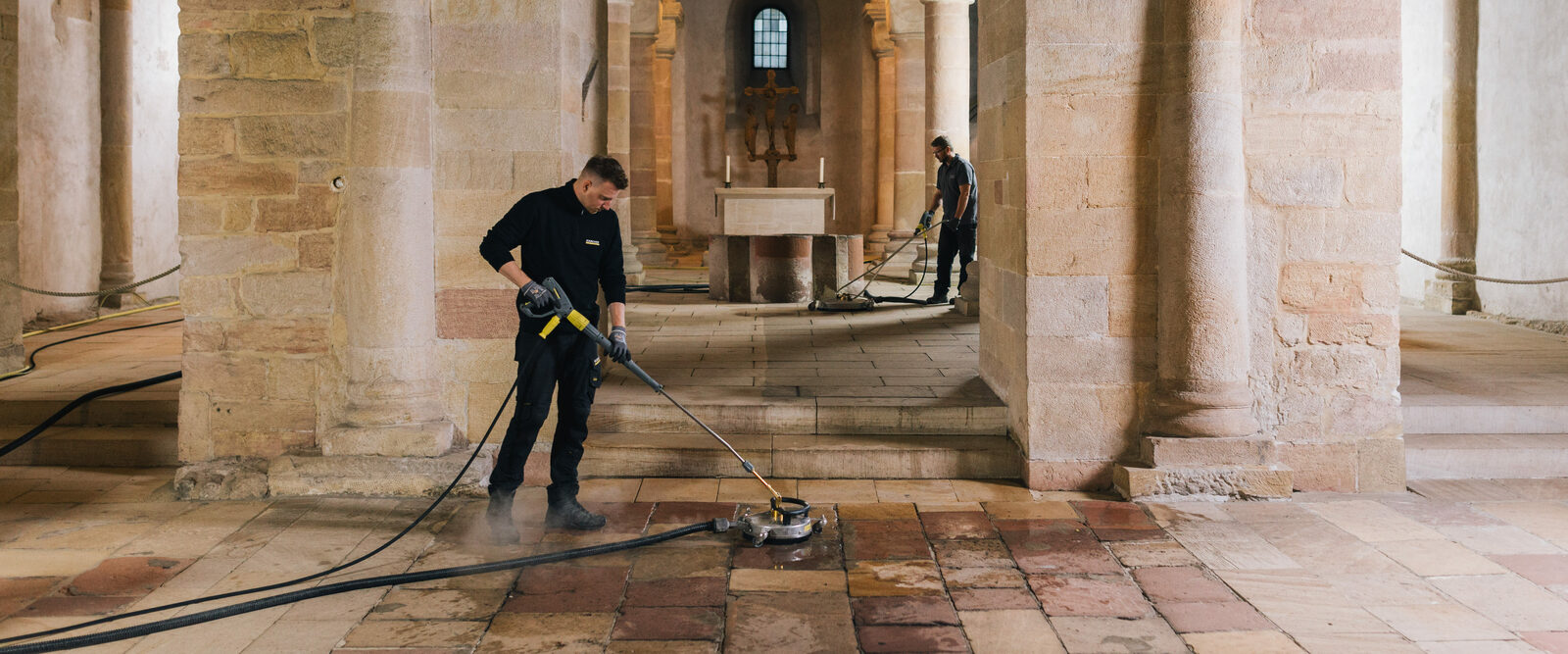
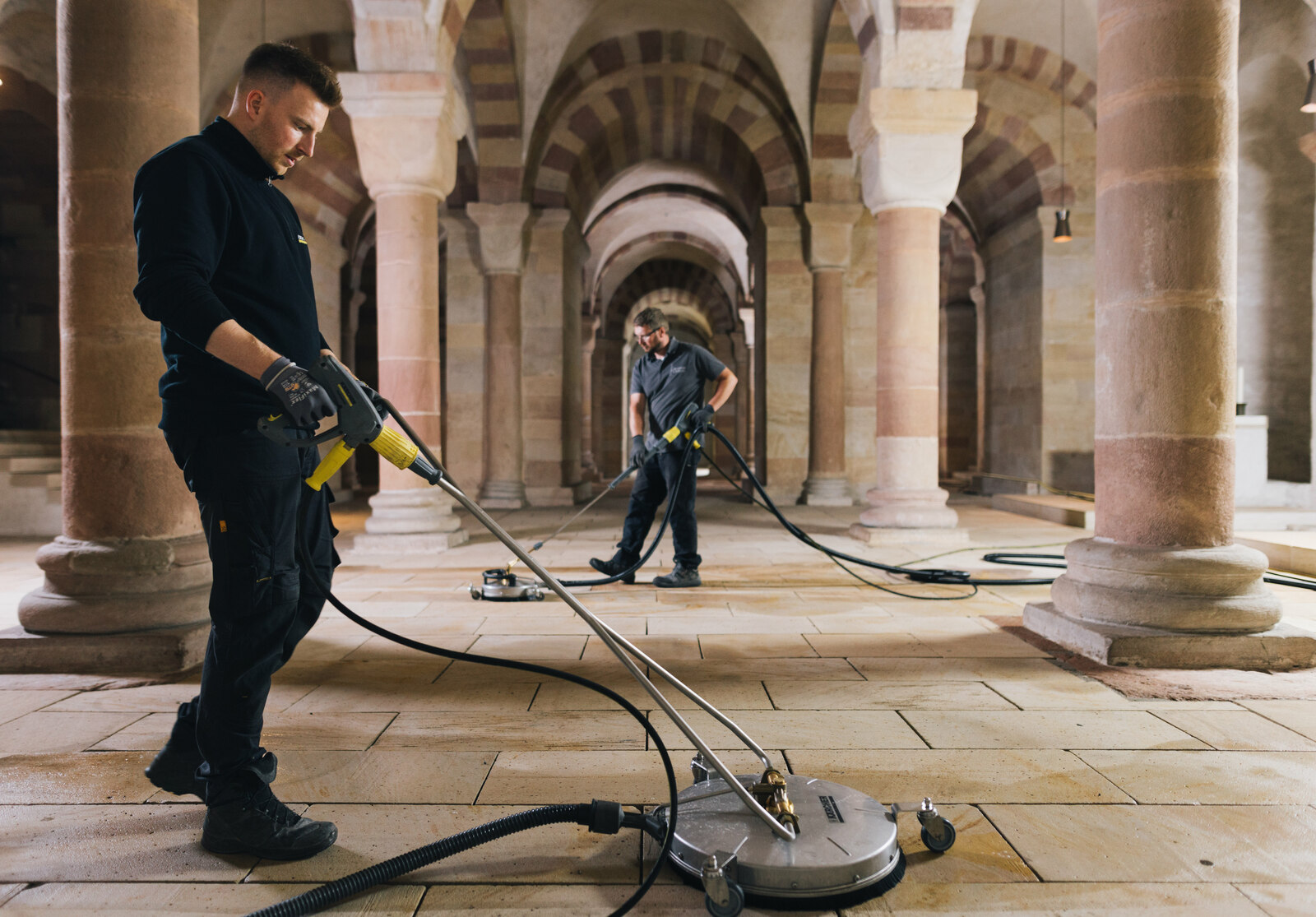
One million visitors a year bring a lot of dirt into Speyer Cathedral. As part of its cultural sponsorship, Kärcher cooperated with the cathedral building authority and helped to give the floors in the cathedral a thorough clean. The first step was the comprehensive and free cleaning of the historic sandstone floor in the crypt of the UNESCO World Heritage Site.
In addition to soiling from visitors, candle wax and soot were also causing a dark haze on the floor surfaces. To remove these, modern technology was used on the floor slabs, some of which are centuries old: the Kärcher experts used a hot water high-pressure cleaner in conjunction with a surface cleaner with 80 °C hot water and a surface pressure of just 1-2 bar to remove the dirt from the pores of the 600 m² sandstone floor in the crypt. The result is clearly visible: the cleaned sandstone is significantly brighter and the structures of the stone are recognizable again. The dirty water was immediately absorbed and drained away. This made it possible to work in a very targeted manner without spreading water and steam. The main cleaning effect was achieved via the temperature of the water and its washing effect; the pressure played a subordinate role in view of the historical substance of the floor.
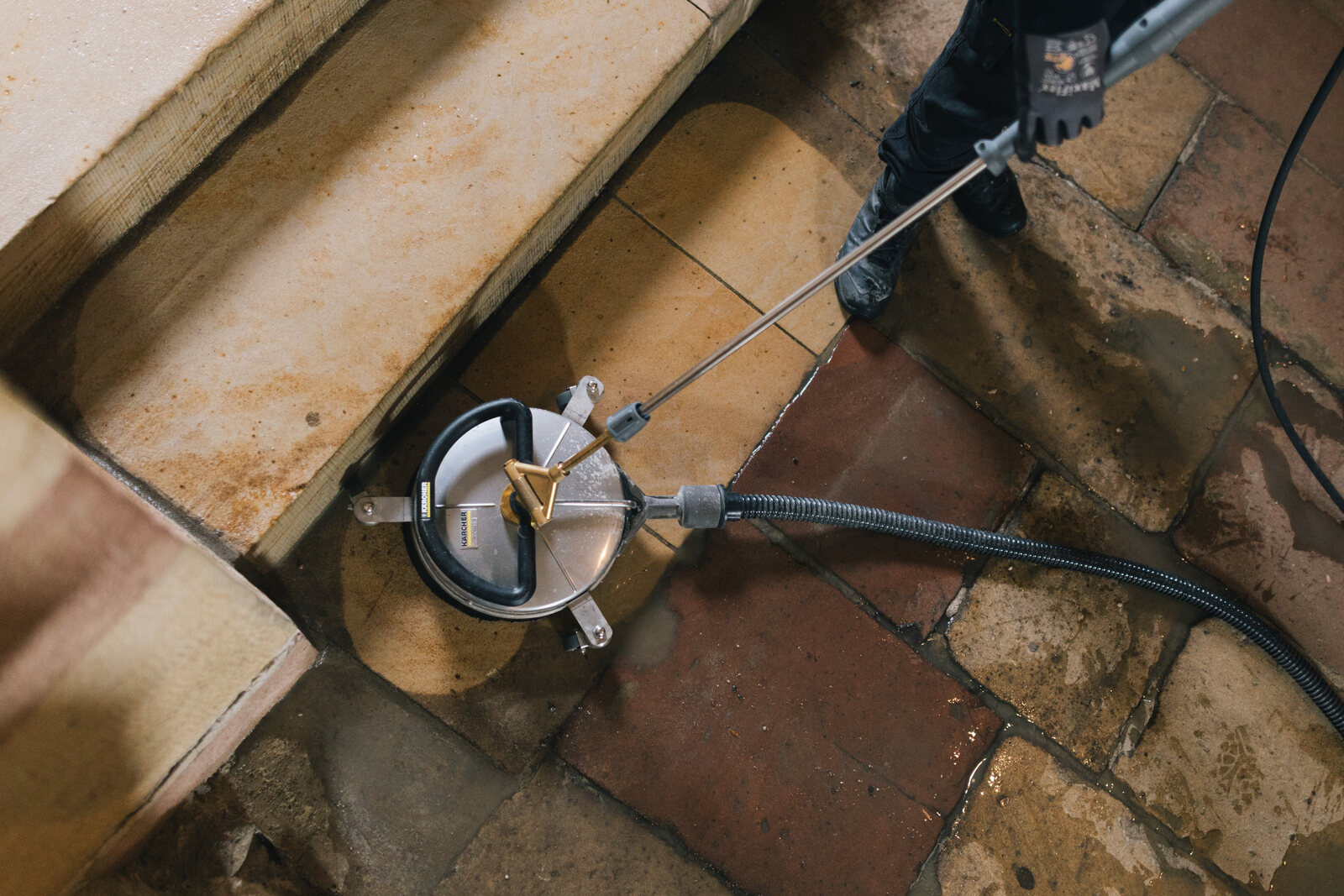
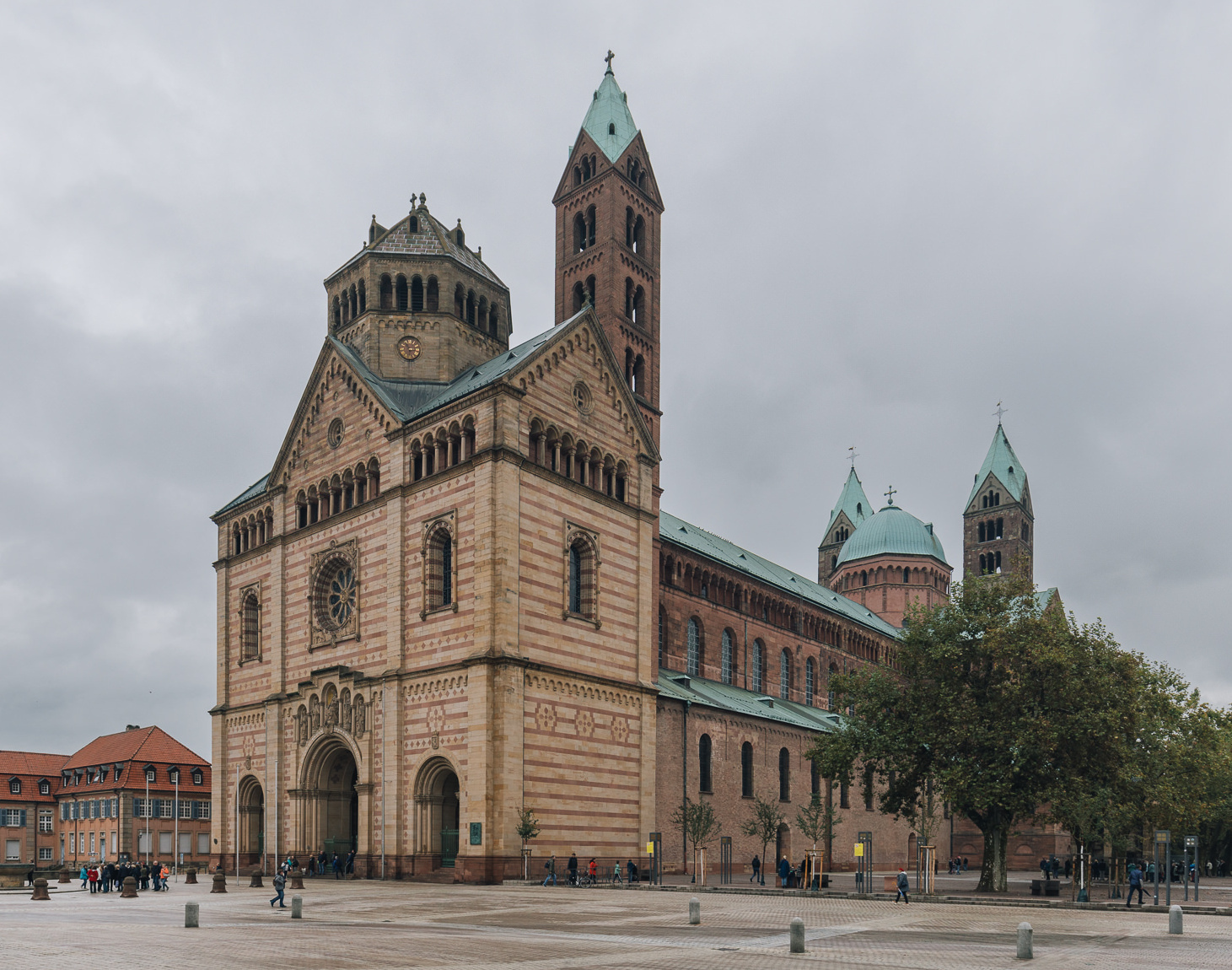
Speyer Cathedral
Built around 1,000 years ago, Speyer Cathedral is now the largest Romanesque church in the world. Considered a prototype of Romanesque architecture, the cathedral was declared a UNESCO World Heritage Site in 1981. The crypt, which extends under the entire choir and transept and is therefore the largest of its kind, dates back to the earliest construction phase of the cathedral. With a vault height of almost seven meters, it is unusually high for a lower church. Until 1961, the floor, which was cleaned during the cleaning work, consisted of rectangular sandstone slabs of various sizes and colors, laid in a masonry bond, which is attributed to the restoration after 1689. In 1962, measures were also carried out in the crypt as part of the major cathedral restoration, which resulted in both old and new sandstone being brought in. As a result, very different shapes and colors of sandstone can be found in the crypt today.

All facts at a glance
Country: Germany
Place: Speyer
Type of soiling: Chewing gum, street dirt, shoe abrasion, soot and candle wax
Cleaning technology: Hot water high-pressure cleaner with surface cleaner
Implementation: October 2023

